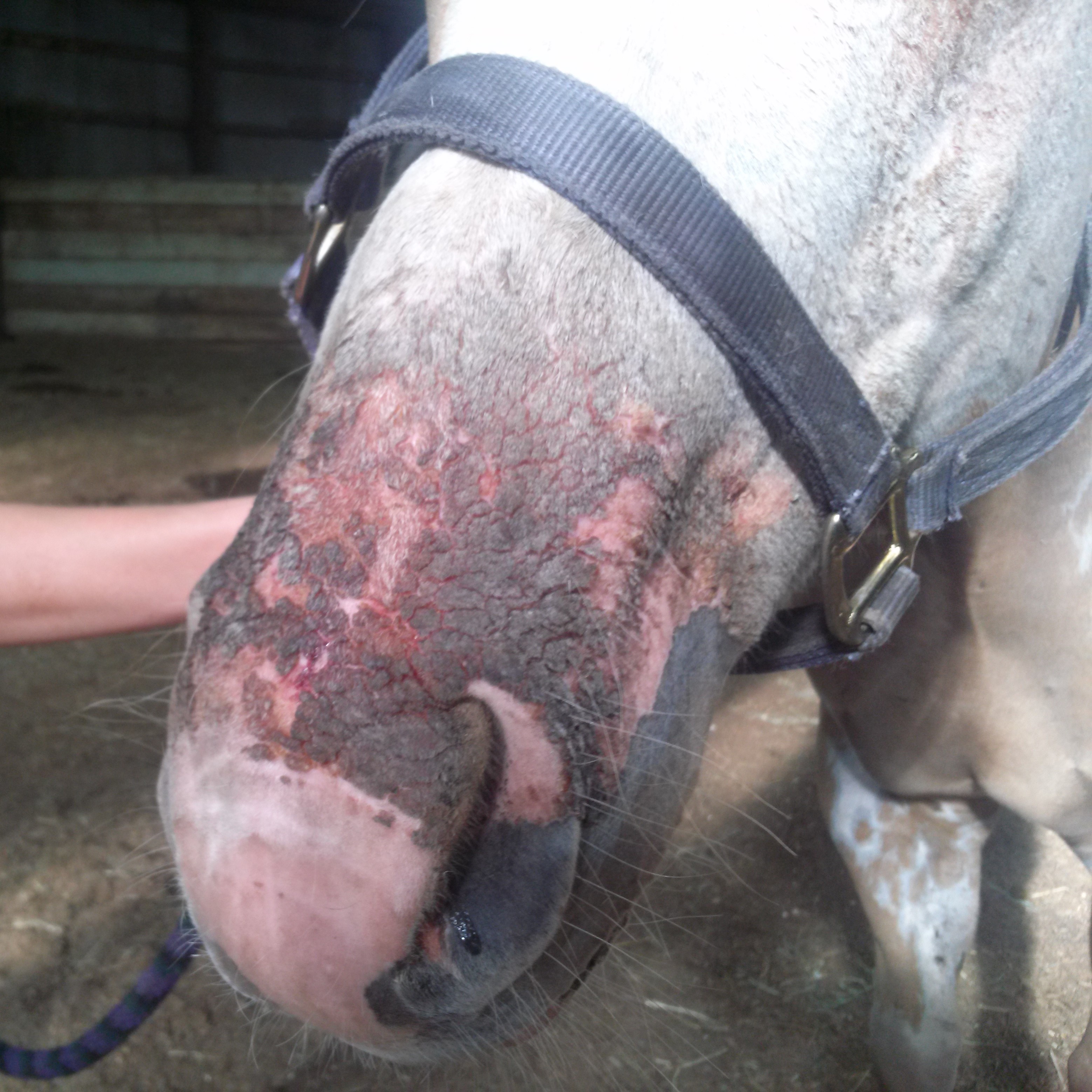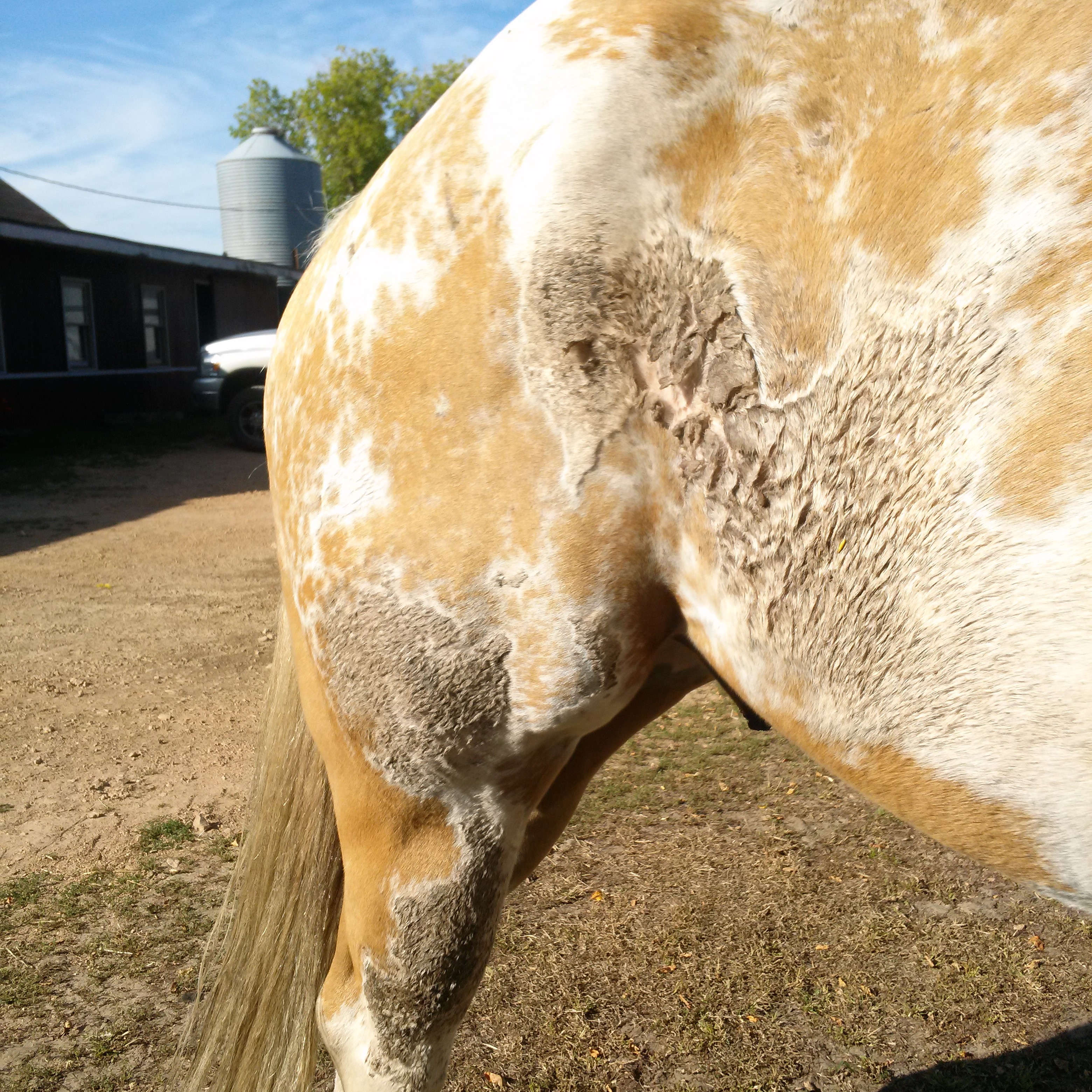Sunburn (photosensitization)/Toxic Plant Ingestion
In September 2013, Milo, a 6-year-old Palomino Overo Paint gelding, was noted to have swollen and inflamed skin around his eye and also seemed to have some sunburn type lesions on his nose. Within a few days it became clear that every white-haired, pink-skinned part of Milo’s body was displaying signs of severe sunburn. These signs included redness, swelling, oozing, and severe pain on being touched. The skin would leak serum and then this would form hard crusts on Milo’s skin. The dark-skinned, pigmented parts of Milo’s body were unaffected. Milo had been pastured outside in the sun all the summer, so why had this severe sunburn popped up now?

After some discussion about changes in the paddock and a new hay bale being put out, it was determined that it was highly likely that Milo was suffering from Primary Photosensitization. This occurs when the horse ingests a toxic plant containing photodynamic agents that are absorbed by the horse’s body and interact with UV light in the horse’s skin enhancing damage to the skin cells. The offending plants include wild parsnip, white clover, moldy clover, St. John’s Wort, and buckwheat. The plants can be consumed fresh or dried in the hay.

** It should be noted there is another plant-related sunburn disorder called Secondary Photosensitization. This form occurs when a horse ingests plants containing a toxin that damages the liver. The severe liver damage leads to sensitivity to UV light and sunburning as well as other issues related to liver failure. This condition can be fatal. It was determined that Milo DID NOT have this type of photosensitivity because his liver enzymes were normal on bloodwork. **
To help Milo through his severe sunburn he was removed from the paddock and kept indoors. He was placed on pain medication and antibiotics to prevent secondary skin infection. Milo was gently bathed several times per week to remove the crusts and dead skin. Silver sulfadiazine lotion and diaper rash cream were used to keep skin moist and protected. Over the course of a couple months Milo’s skin healed and he is doing well.
To learn more about toxic plants, please check out the University of Minnesota Equine Extension Service website : http://www1.extension.umn.edu/agriculture/horse/pasture/#weeds